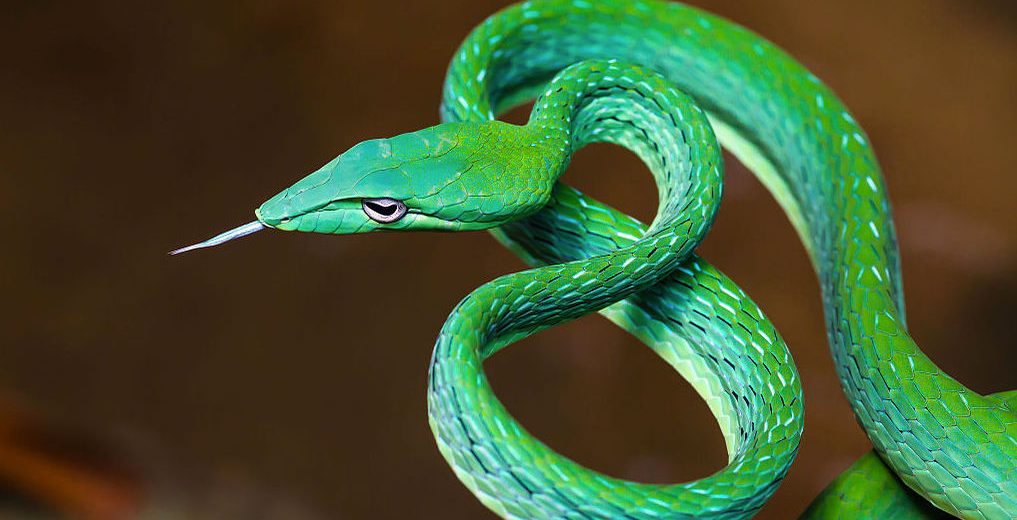
Slithering amongst the trees is the Asian vine snake, aka Oriental whip snake, Boie’s whip snake, or Gunther’s whip snake. These venomous serpents dwell in Cambodia, China, India, Indonesia, Bangladesh, Bhutan, Laos, Malaysia, Brunei, Burma, Philippines, Singapore, Vietnam, and Thailand. Vine snakes can be found hanging out in moist and dry forests; shrublands, plantations, pasturelands, rural gardens, and even urban areas. Even though these snakes are subjected to habitat loss, at the hands of agriculture and the logging industry; hunting; and trapping, these critters are still listed as Least Concern by the IUCN.
First the Stats…
Scientific name: Ahaetulla prasina
Weight: Up to 2.8 lbs.
Length: Up to 5 feet
Lifespan: Up to 12 years
Now on to the Facts!
1.) As their name suggests, these snakes are arboreal (spend their lives in trees).
2.) Asian vine snakes are diurnal (active during the day).
3.) Like other snakes, they are solitary and only come together to mate.
4.) These snakes prey on various reptiles and amphibians.
5.) Birds of prey are their primary predator. Plus they are often captured for the exotic pet trade.
But wait, there’s more on the Asian vine snake!
6.) The Asian vine snake is venomous, however, their venom is not medically significant to larger animals or humans.
7.) These snakes are ovoviviparous (female births live young).
Did you know…?
The effects of their venom are localized pain, swelling, and redness. These snakes are rear-fanged. Meaning they have to bite and chew the venom into their prey.
8.) Females birth up to 10 young snakelets each season.
9.) Snakelets are born precocial (totally self-sufficient) and venomous. The young typically measure in at about 9.5 inches long.
10.) Although venomous, these vine snakes are not known to be terribly aggressive. But, if threatened, they will take up an S shape, puff up their neck to look more threatening, and will hiss. If that doesn’t work, they will bite.
Now a Short Asian Vine Snake Video!
Be sure to share & comment below! Also, check out the Critter Science YouTube channel. Videos added regularly!
Want to suggest a critter for me to write about? Let me know here.
Think you know a lot about critters? Try your hand at these fun, free quizzes:
Photo credit: Rushenb



